25 Unique Things to Do in Nova Scotia (Beyond Peggy’s Cove)
From iconic lighthouses to dramatic coastal drives, this part of Canada is full of postcard-perfect scenery. But there are so many other unique things to do in Nova Scotia—experiences you won’t find in every travel guide. From walking on the ocean floor to spotting wild horses on a remote island, the province is full of surprising, only-here moments just waiting to be discovered.
It’s funny how living somewhere can make you overlook the things that make it special. But the more we’ve road-tripped, hiked, and wandered across the province, the more we’ve come to realise just how many unique experiences there are in Nova Scotia—and how few people seem to know about them.
Yes, you’ll find postcard classics like Peggy’s Cove and the Cabot Trail (and yes, they’re still worth seeing). But there’s also a side of Nova Scotia that’s a little more unexpected—Berlin Wall fragments in a small-town park, fossil hunting on a UNESCO-protected coastline, or even dinner served on the ocean floor.
Whether you’re visiting for the first time or looking to see your own backyard with fresh eyes, these are some of our favourite off-the-beaten-path things to do in Nova Scotia—a list that skips the “just Google it” tourist stops and leans into hidden gems, local surprises, and family-tested adventures we’ve genuinely loved.
Experience Nova Scotia’s Natural Wonders
Nova Scotia isn’t short on dramatic landscapes, but some of the most unforgettable moments happen when you step away from the usual lookout points. These five natural wonders showcase the province’s geology, tides, wildlife, and wide-open spaces—each offering something you won’t find anywhere else.
1. Walk on the Ocean Floor at Burntcoat Head Park
There are a few places in Nova Scotia where you can walk on the ocean floor—but Burntcoat Head Park is one of the easiest and most impressive. With actual steps down to the seabed and wide open access at low tide, it’s a great place to experience the full power of the Bay of Fundy.
This is also the site of the highest recorded tides in the world, and you can literally see the difference between high and low tide etched into the cliffs. Wander past tide pools, seaweed-draped rocks, and sculpted red clay as far as the eye can see. If your kids are anything like mine, they’ll love getting muddy and checking the tide pools to see if they can find hermit crabs. Just check tide charts before you go—you don’t want to get caught out when the water comes rushing back in.

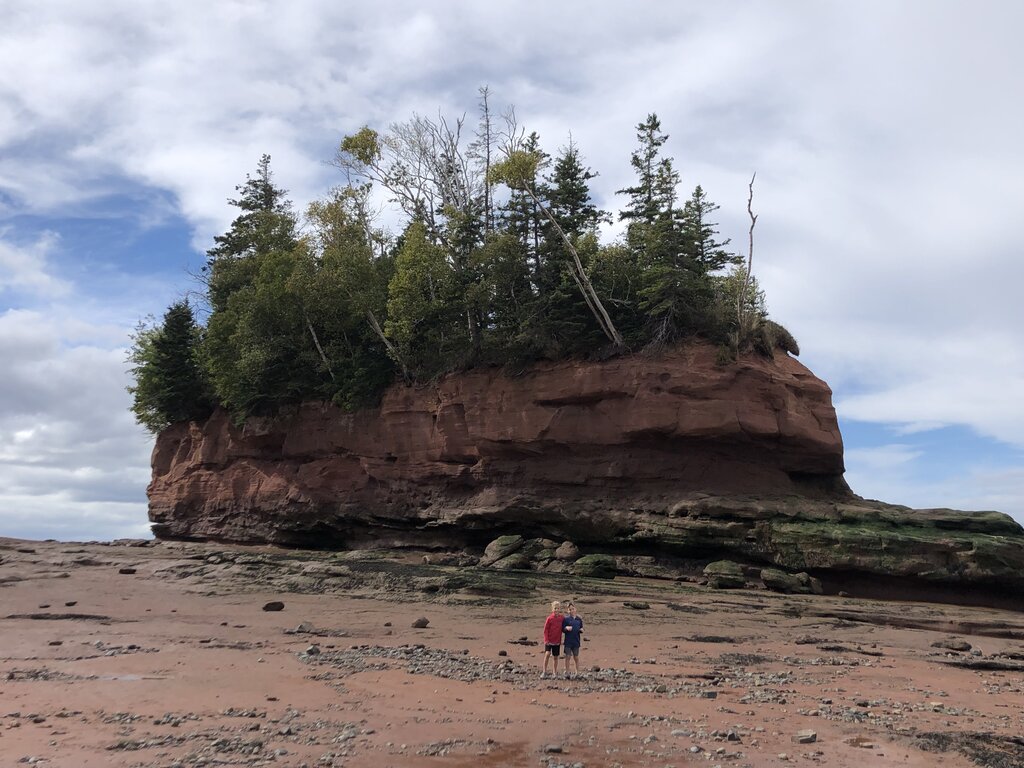
2. Watch the Tidal Bore (or Ride It!)
Twice a day, rivers in certain parts of the province suddenly reverse as the tide rushes in from the Bay of Fundy. This phenomenon, called a tidal bore, turns calm streams into upstream waves—and watching it is one of those things that’s much cooler in person than it sounds on paper.
But for something truly unique to Nova Scotia, try tidal bore rafting. Only possible in a few places in the world, this one-of-a-kind adventure happens on the Shubenacadie River. As the tide surges in, you ride a zodiac-style boat straight into standing waves created by the collision of river and sea. It’s wild, muddy, and unforgettable—best for older kids or adults, and definitely one for the bucket list.
3. Hunt for Fossils at Joggins Fossil Cliffs
This UNESCO World Heritage Site is like a time machine set into the cliffs. As you walk along the beach, you’re literally stepping over fossils that date back over 300 million years—even older than the dinosaurs. Some are embedded in rocks; others lie in plain sight, washed down by the tide.
My kids love searching for fossils here, and it’s always exciting to spot one in the wild (even though you can’t take them home). For me, just walking along the shore and looking up at the layered cliffs is incredible—it’s humbling to think these rocks have been standing here for hundreds of millions of years.
You can explore on your own or join a guided tour to learn more about what you’re seeing. It’s hands-on, it’s outdoors, and one of the true hidden gems in Nova Scotia, especially if you love science and history.
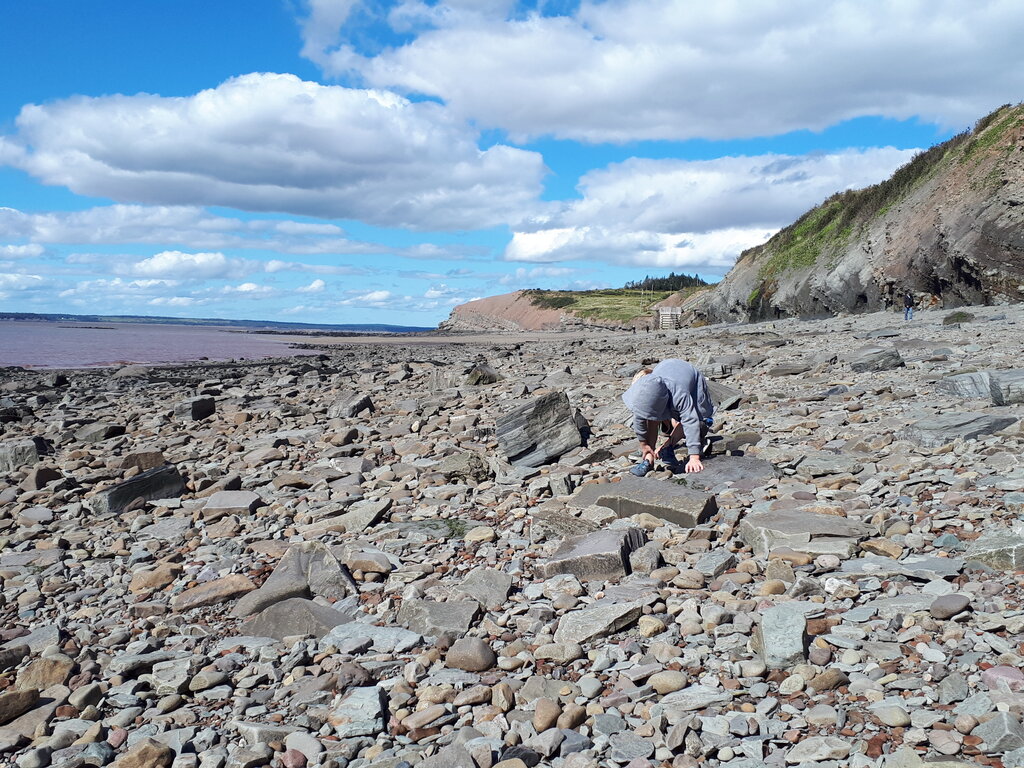
4. Explore Kejimkujik National Park & National Historic Site
“Keji,” as locals call it, is one of the most popular spots in the province for camping—and one of our family’s personal favourites. The park is huge, quiet, and full of hiking trails, backcountry paddling routes, and scenic lakes to explore. It’s also a fantastic place to visit just for the day.
What makes Kejimkujik truly special is its triple designation: it’s a National Park, a National Historic Site, and a Dark Sky Preserve all in one. You can explore ancient Mi’kmaq petroglyphs on a guided tour, paddle to a remote beach, or stick around after sunset (which are pretty spectacular) to catch one of the clearest night skies in eastern Canada.
5. Visit Sable Island (Home of the Wild Horses)
One of the most remote—and protected—parts of Nova Scotia, Sable Island sits far out in the Atlantic and is home to around 500 wild horses. Visiting takes a bit of planning (you’ll need to book with an approved tour provider), but it’s one of the most unique wildlife experiences you can have in Canada.
Add in sprawling dunes, seal sightings, and the island’s shipwreck-laden history, and you’ve got a destination that feels more like a nature documentary than a day trip.
Unique Historical & Cultural Gems
Nova Scotia’s past is layered—colonial, Indigenous, military, and even Cold War history all overlap here in ways that are often surprising. These spots aren’t your typical museum stops—they’re the kind of places that blend story, setting, and a little bit of the unexpected.
6. Step Back in Time in Annapolis Royal
Did you know one of the oldest towns in Canada is tucked along the Annapolis River? Annapolis Royal may be small, but it’s packed with history—and charm.
Stroll cobbled streets, visit the beautifully maintained Historic Gardens (some of the best in Nova Scotia), and explore Fort Anne, where kids can run along the grassy ramparts and soak up centuries of stories. There’s also a compact but walkable downtown filled with heritage homes, museums, and even a candlelit graveyard tour if you’re staying overnight. It’s one of the best places to get a feel for the many layers of Nova Scotia’s past—Mi’kmaq, Acadian, French, British, and more.
7. Walk Through Berlin Wall Segments
It’s not the kind of thing you expect to find just outside Truro—but tucked away on a small path at Dalhousie University’s Agricultural Campus in Bible Hill, you’ll find several standing segments of the Berlin Wall. Arranged in pairs with a path winding between them, they’re easy to miss if you don’t know they’re there—and all the more striking when you do.
You can walk right through, touch them, and wonder how they ended up here. They’re currently the only publicly viewable segments left in Nova Scotia, making this a one-of-a-kind Cold War encounter and definitely a great conversation starter for kids and adults alike.

8. Visit the Maud Lewis Replica House
You’ve probably seen photos of Maud Lewis’s brightly painted folk art—even if you didn’t know her name. The tiny house where she lived and painted (now preserved inside the Art Gallery of Nova Scotia) is covered in her signature flowers, cats, and coastal scenes. It’s cheerful, but also moving when you learn her full story.
If you’re visiting Halifax, this stop is easy to include—and a great way to introduce kids to a Canadian artist whose life was as remarkable as her work.
9. Hike to a WWII Bunker at Duncan’s Cove
This is one of our favourite coastal hikes in the province. Duncan’s Cove offers sweeping ocean views, rugged cliffs, and a trail that feels just wild enough to be fun without being too tricky.
But the real surprise? At the turnaround point (or close to it), you’ll find the remnants of a World War II coastal observation post, once used to scan for German U-boats. There’s no signage, no fanfare—just the concrete shell of history hiding in plain sight. You can even walk inside.
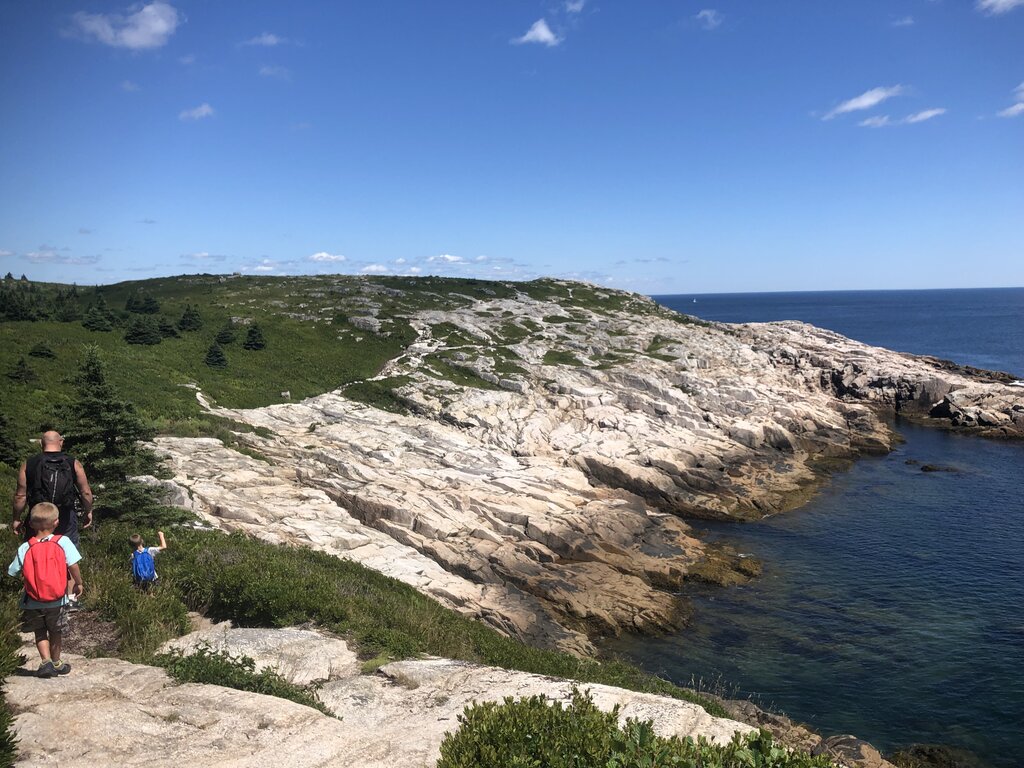
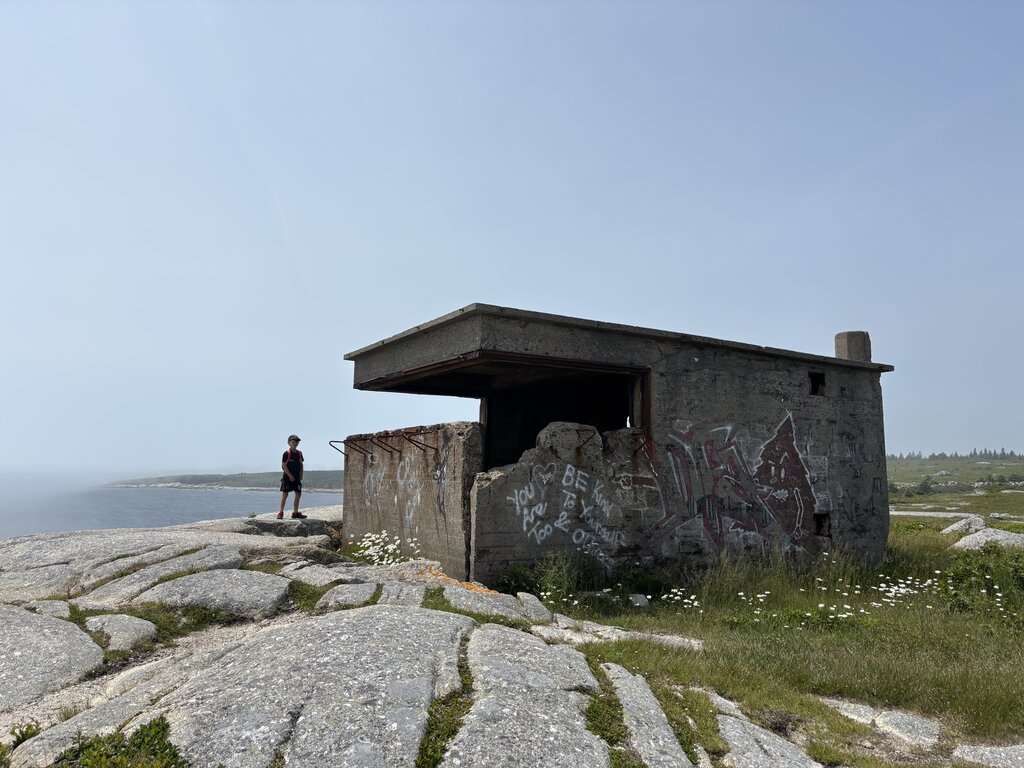
10. Find Titanic Graves at Fairview Cemetery
Halifax played a key role in the recovery efforts after the Titanic sank, and over 100 victims are buried at Fairview Lawn Cemetery. The gravestones are arranged in a curved row, echoing the shape of the ship, and some still bear the names of passengers whose stories have only recently been uncovered.
It’s not a “fun” stop, but it’s a meaningful one—and a chance to connect a world-famous event to a very real, very local place.
Cool Coastal Adventures (That Aren’t Just the Beach)
With nearly 13,000 kilometres of coastline (yes, really), Nova Scotia is all about ocean views, rugged cliffs, and the kind of scenic drives that make you pull over more than you planned. Here are some of the best ways to explore the coast—by road, trail, and even tide.
11. Drive the Cabot Trail
This one might be on every Nova Scotia itinerary—but it’s on for a reason. The Cabot Trail is often ranked as one of the most scenic drives in the world, and it’s worth every twist, turn, and hill. Coastal cliffs, highland plateaus, sweeping ocean views—it’s the kind of road trip that sticks with you.
There’s fantastic hiking here too. Skyline Trail is the most famous, but Franey Trail is another favourite—steeper, more challenging, but with incredible views at the top. Whether you do the full loop in a day or spread it out over a long weekend, this is one experience we keep coming back to.

12. Take a Puffin Tour
Whales get all the attention in Nova Scotia—but did you know you can also see puffins? These colourful little seabirds nest on offshore islands in late spring and early summer, and a handful of operators run tours specifically to spot them. Seeing them bobbing on the waves or flying back to their burrows is something you don’t easily forget.
And if puffins aren’t your thing, don’t worry—there are still plenty of whale watching tours across the province too, from the Bay of Fundy to Cape Breton.
13. Hike to the Balancing Rock
On Long Island, a short ferry ride from Digby, there’s a trail that leads to one of Nova Scotia’s coolest natural wonders: the Balancing Rock. After an easy forest walk and a long staircase down toward the coast, you’ll come face to face with a massive basalt column that somehow balances upright on the edge of the cliff.
The hike isn’t hard, though the steps can feel like a workout on the way back up. But standing on the platform and staring at this giant rock, it’s impossible not to wonder how it hasn’t toppled over. It’s one of those sights that makes the effort more than worth it—and one our kids still talk about.
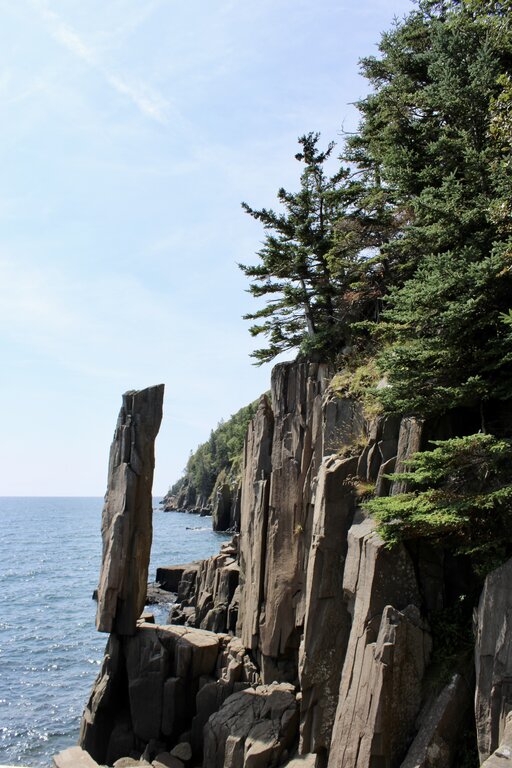
14. Check Out Cape Forchu Lighthouse
Most people head to Peggy’s Cove when they think of Nova Scotia lighthouses—but Cape Forchu, just outside Yarmouth, has its own quiet magic. With its distinct apple core–shaped tower, wide coastal views, and well-kept walking paths, it’s a perfect place for a picnic.
Even better—you can climb the lighthouse itself, making this one of the few in the province where that’s still possible. There’s also a small café and interpretive signs, but the main draw is how peaceful it feels—especially compared to busier lighthouse stops.
15. Explore the Concrete Creations
Tucked in behind a garden centre, this concrete sculpture garden is one of the most unusual things in Nova Scotia. Dozens of detailed sculptures—some large, some small—are scattered along trails through the woods. Stop and pose for photos, or just walk slowly and take in the sheer detail of it all.
The amount of time and effort it must have taken to carve these statues is incredible, and the fact that it’s completely free to explore makes it even better. It’s one of those places you’ll be talking about long after you leave—and one my kids always ask to return to.


Eat & Drink the Nova Scotia Way
You can get good seafood in a lot of places—but there are some food experiences that are distinctly Nova Scotian, shaped by the land, the tides, and the stories that come with them. These local eats and drinks aren’t just about flavour—they’re about tasting a little piece of the province.
16. Dine on the Ocean Floor
Yes, really. At Halls Harbour, you can book a multi-course meal served on the ocean floor—timed perfectly between tides. You’ll dine with your feet in the sand while learning about the local tides, aquaculture, and ingredients sourced straight from the Bay of Fundy. It’s a splurge, but also one of the most unique dining experiences in Canada.
17. Sample Tidal Bay Wine
Tidal Bay is Nova Scotia’s signature white wine—light, crisp, and perfect for a sunny afternoon. It’s only made here, and each bottle is a little different depending on the winery. You’ll find it at most local restaurants, but it’s even better when sampled right at the source.
Head to the Annapolis Valley, where vineyards stretch across rolling hills and many offer tastings, patio seating, and snacks. It’s a relaxed, scenic way to sip something truly local.
18. Try Digby Scallops (Fresh Off the Boat)
Digby isn’t just a pretty waterfront town—it’s also famous for its scallops, which are considered among the best in the world. Sweet, tender, and flash-seared to perfection, they’re often caught the same day you eat them.
If you’re in the area, grab lunch from a local seafood shack like Ed’s Takeout, or sit down at one of the harbourside restaurants. We’ve never had a bad plate of scallops here.
19. Order a Lobster Roll (Any Time of Year)
Lobster is a year-round thing in Nova Scotia—not just a summer treat. Each part of the province has its own season, so there’s always fresh lobster being hauled in somewhere. On the South Shore, February is peak lobster season and even comes with its own winter festival. Over on the Eastern Shore, the season runs through December, meaning you can tuck into lobster long after summer has ended.
And one of the best ways to enjoy it? A classic lobster roll. You’ll find them everywhere from well-known restaurants to small-town diners and family-run takeout windows. Some of our favourites are Rebecca’s in Mahone Bay, Wreck Cove General Store on the Cabot Trail, and Captain Kat’s in Barrington, deep in lobster country. Whether you like yours chilled with mayo or warm with butter, there’s no wrong way to eat one here.

20. Try a Donair (Yes, Really)
It’s messy, meaty, and has a cult following for a reason. The donair may have started as a spin on a Greek dish, but it’s since become something uniquely Nova Scotian—especially in Halifax, where it’s officially recognized as the city’s signature food.
Picture spiced beef, sweet garlic sauce, and diced onions and tomatoes all wrapped in a warm pita. It’s not elegant, but it is iconic. Late-night snack? Guilty pleasure? Local tradition? The answer is yes to all three.
Quirky Roadside Attractions & Small-Town Fun
Part of the joy of exploring Nova Scotia is stumbling across the unexpected. From giant blueberries to colourful stone cottages—and even lobster trap Christmas trees—these stops don’t take long, but they add plenty of fun (and great photo ops) to a road trip. We often use them as leg-stretch breaks for the kids, but they’re also the kind of unique little traditions and landmarks that make Nova Scotia memorable.
21. Stand at the Halfway Point to the Equator in Stewiacke
In the small town of Stewiacke, you’ll find a marker claiming the exact halfway point between the Equator and the North Pole. But it’s more than just a sign—there’s a whole roadside stop here, with mini golf, ice cream, and even a big mastodon statue for photos. It’s a quick, family-friendly stop that’s worth pulling off the highway for.
22. Take a Photo with the Big Blueberry in Oxford
Oxford is known as the blueberry capital of Canada, so of course there’s a massive blueberry statue to prove it. It’s silly, it’s fun, and it’s an easy stop to stretch your legs while road-tripping through Cumberland County.
23. Check Out the Coloured Stone Cottages
These brightly painted stone-covered cottages are one of Nova Scotia’s most unusual roadside sights. Built in the 1930s by Edwin MacDonald, their chimneys and walls are covered in multicoloured stones, giving them an interesting and unusual look.
They’re fun to stop and admire from the outside, but some are also available as vacation rentals if you want the full experience. A quirky slice of Nova Scotia history—and definitely worth a detour.


24. See the World’s Largest Fiddle in Sydney
Down on the Sydney waterfront, you’ll find the world’s largest fiddle, standing six stories high. It celebrates Cape Breton’s deep Celtic music traditions and makes a great backdrop for photos, especially if you’re catching the ferry or exploring the boardwalk.
25. See a Lobster Trap Christmas Tree
Come winter, coastal communities across Nova Scotia build Christmas trees out of lobster traps, decorating them with buoys and lights. It’s a beloved local tradition that started on the Eastern Shore and has since spread throughout the province.
Each tree is a little different—some simple, some elaborate—and spotting them has become one of our favourite seasonal adventures. If you’re visiting in December, it’s one of the most festive and unique sights you’ll find anywhere.

What About Peggy’s Cove or the Citadel?
You can’t talk about Nova Scotia without someone bringing up Peggy’s Cove or the Halifax Citadel. They’re two of the province’s best-known attractions, and while I usually suggest that people still visit them, I also remind them not to only do those two—because there’s so much else to see beyond these icons.
Peggy’s Cove (Worth It—But Go Beyond the Lighthouse)
Yes, Peggy’s Cove is crowded. Yes, it’s touristy. But it’s also stunning, and standing on those smooth granite rocks with the waves crashing below is a classic Nova Scotia moment. It really is worth seeing at least once.
That said, don’t just pull over, snap a lighthouse photo, and leave. Spend a little time exploring the tiny fishing village itself—the colourful boats, narrow lanes, and coastal views are just as photogenic as the lighthouse. If you’re up for a short hike, the Polly’s Cove Trail is only a few minutes down the road. It’s about 4 km round trip and takes you through the windswept shrubs and granite barrens typical of this stretch of coast, with gorgeous ocean views and far fewer people.

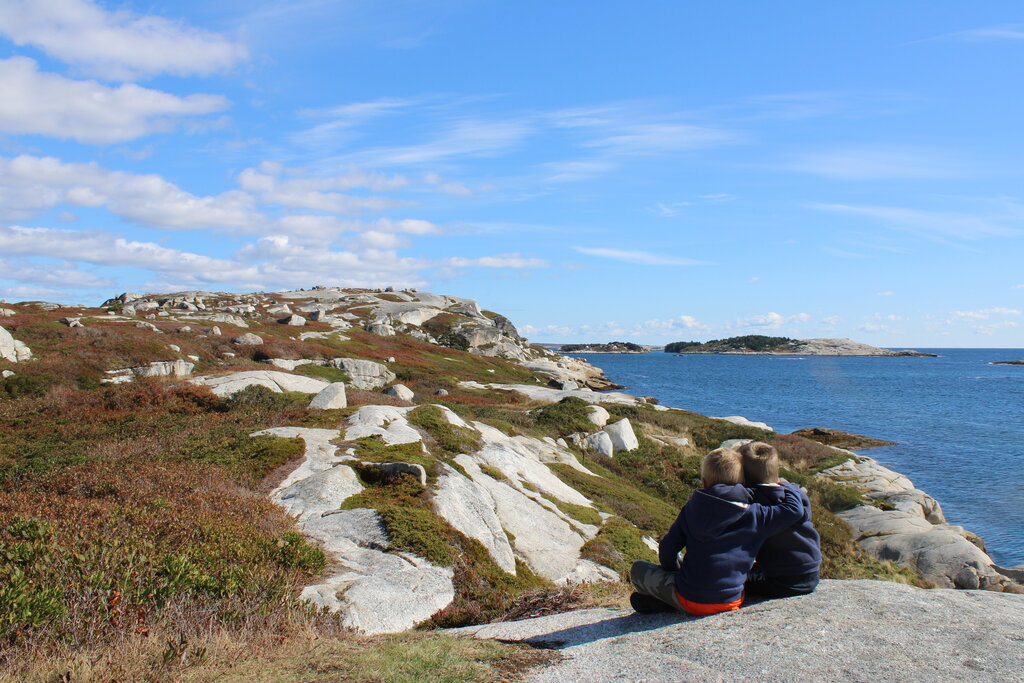
Halifax Citadel
The Halifax Citadel has stood guard over the city since the 1800s, and it’s one of those places I recommend doing once. Inside, there are costumed interpreters, cannon firings, and tunnels to explore, all of which help bring the history to life—especially for kids.
You won’t get sweeping harbour views from the ramparts anymore (the skyline has grown up too much), but it’s still a meaningful way to connect with Halifax’s military past. And honestly, it’s pretty fun hearing the noon gun fire when you’re standing right there on site. Don’t worry though—if you’re anywhere else in downtown Halifax, you’ll still hear it (and quite often across the harbour in Dartmouth too). Just don’t be surprised when that boom makes you jump.
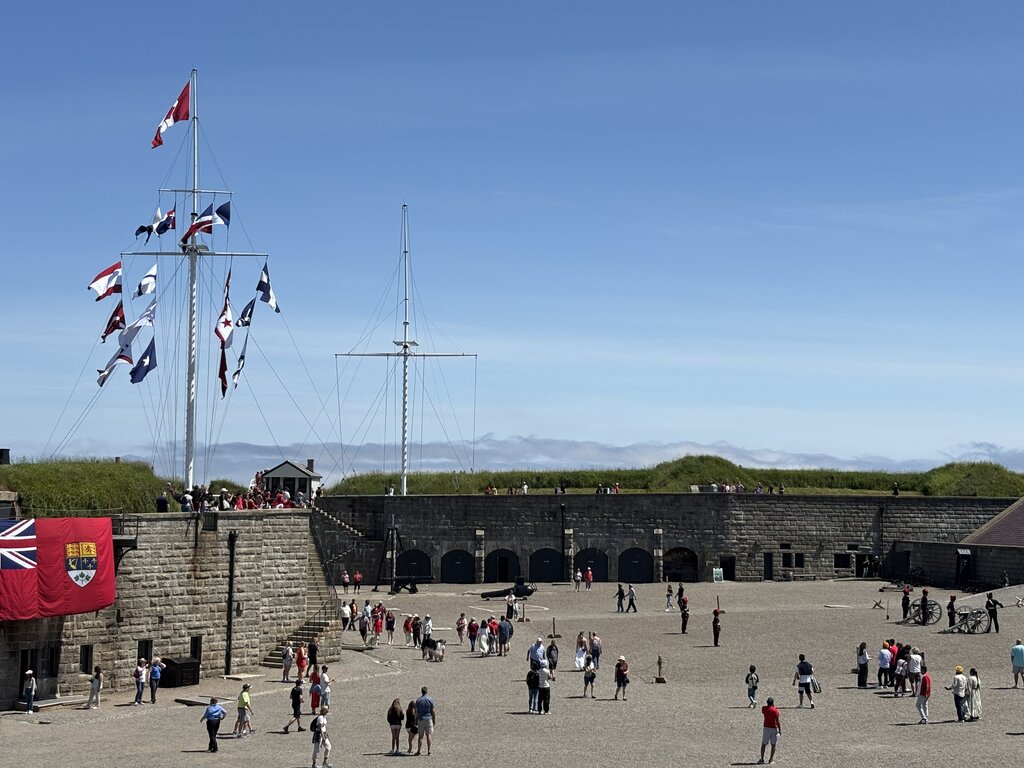
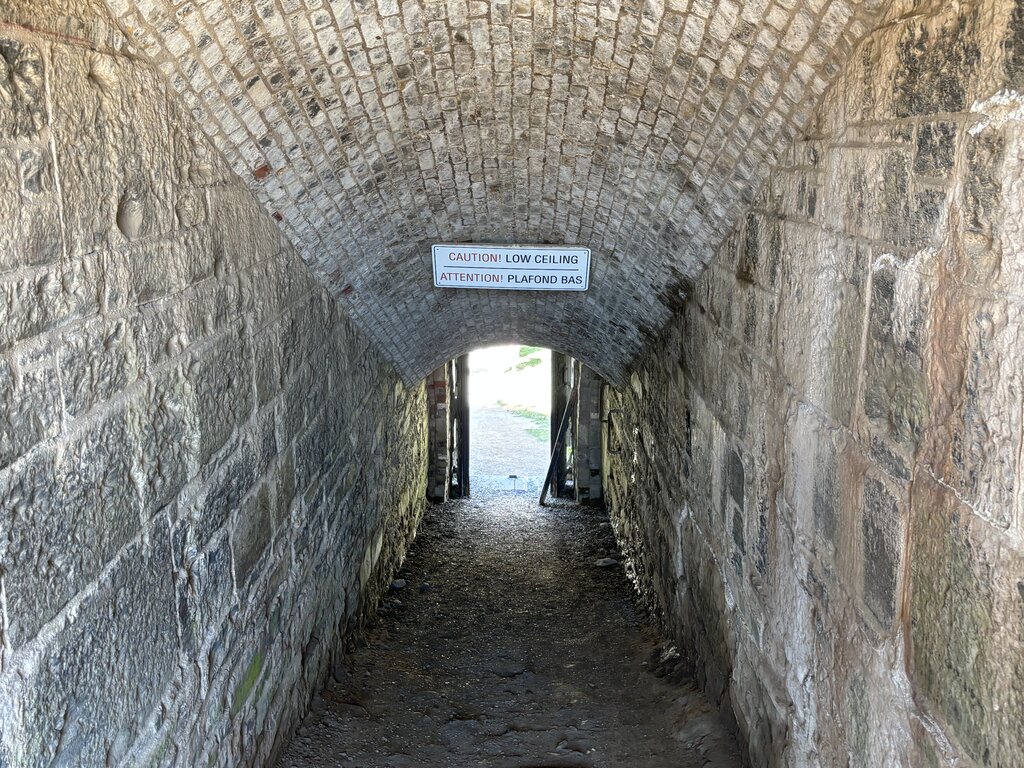
Final Thoughts on Unique Things to Do in Nova Scotia
From walking on the ocean floor to spotting puffins offshore, from Cold War relics to colourful roadside cottages, there’s no shortage of unique things to do in Nova Scotia. Some of these spots take a bit of planning, others are quick detours, but all of them show a side of the province that goes beyond the usual postcard pictures.
This list isn’t about the “just Google it” tourist stops—it’s about the hidden gems, the quirky finds, and the family-tested adventures that have made us fall in love with living here. Whether you’re road-tripping the coast, camping under the stars, or just looking for something different to do with the kids, you’ll find plenty of experiences that you won’t get anywhere else.
So yes, go see Peggy’s Cove. Drive the Cabot Trail. But then keep exploring—you never know what unforgettable corner of Nova Scotia you’ll discover next.






